Today, let’s dive into actions during gameplay. We’ll explore the strategic moves you can make during your turn, mastering the art of card placement, and the skill of managing your board state. Additionally, honing your ability to effectively communicate your actions to your opponent as you navigate through your turn is crucial. Let’s embark on this journey together!
Start your turn
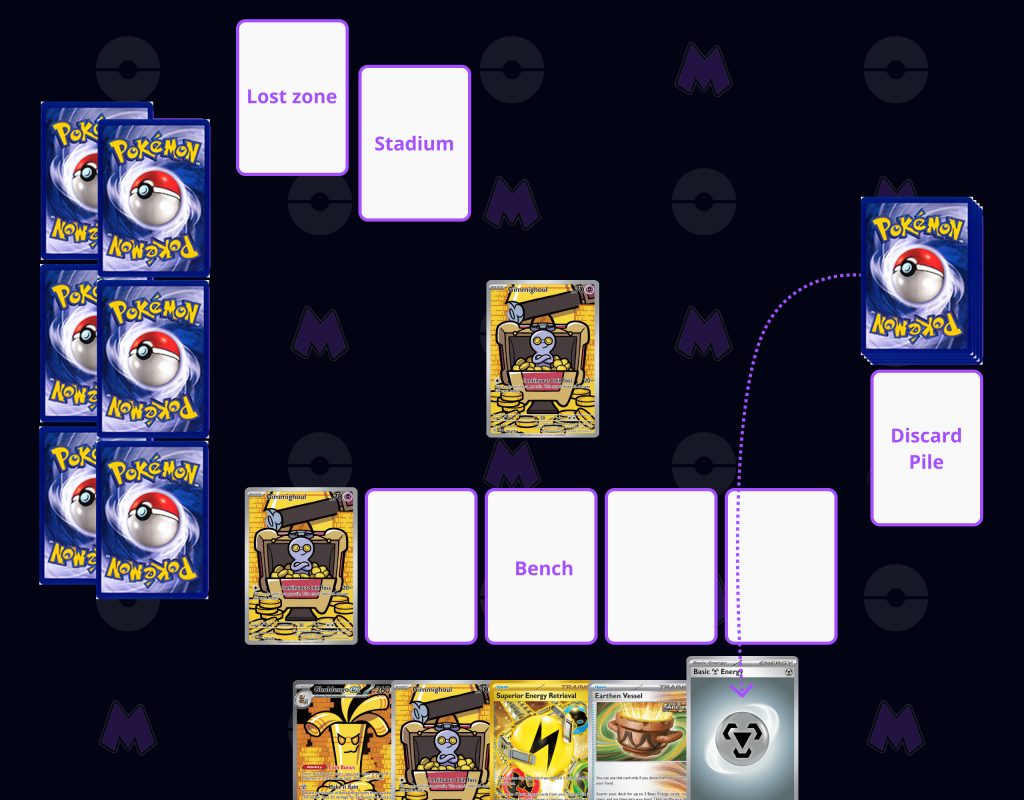
At the beginning of your turn, draw a card from your deck and add it to your hand. If your deck is empty, your opponent wins.
During your turn
After drawing a card, you can perform any of these actions in any sequence. It’s essential to strategise the best order to achieve your goals, whether it’s knocking out the opponent’s Pokémon, building your bench, gathering energy, or obtaining a specific card. Consider the probability of finding the card you need based on your available cards and those already drawn from your deck.
Put basic Pokémon onto bench
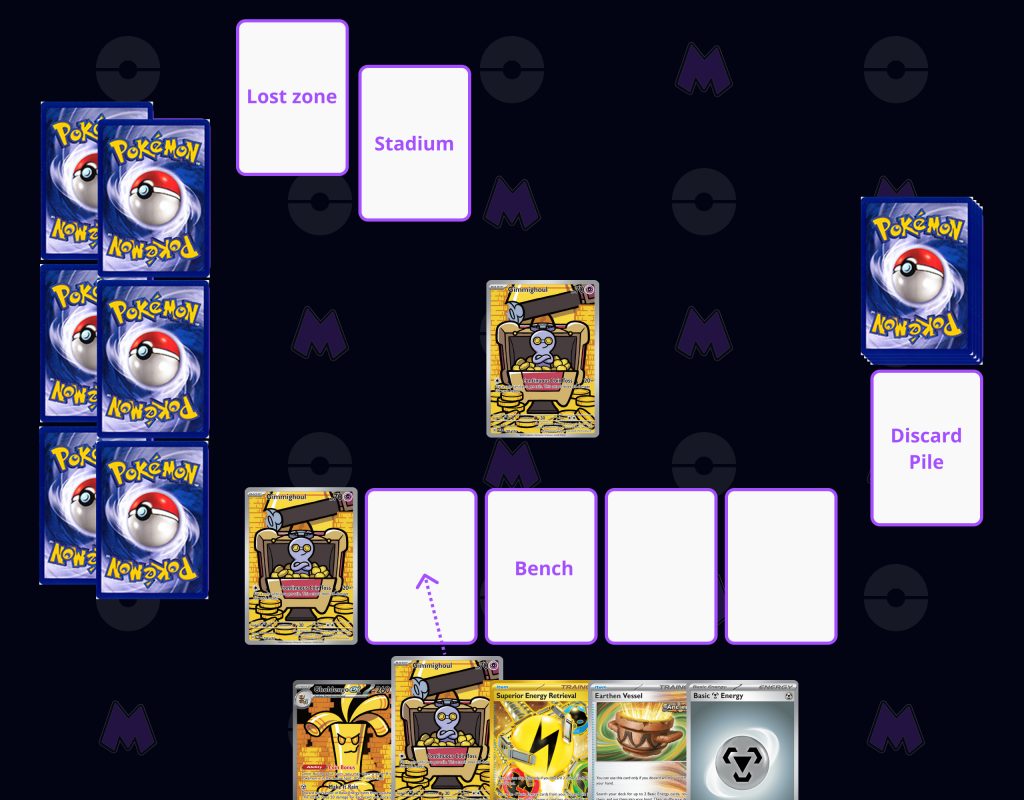
Add basic Pokémon from your hand to your bench. You can place up to five, but consider strategically limiting the number of Pokémon on your bench. Sometimes, holding back on playing every basic Pokémon from your hand is wise. This prevents easy knockouts for your opponent or avoids powering up certain Pokémon with too many on your bench due to an ability or attack.
Evolve Pokémon
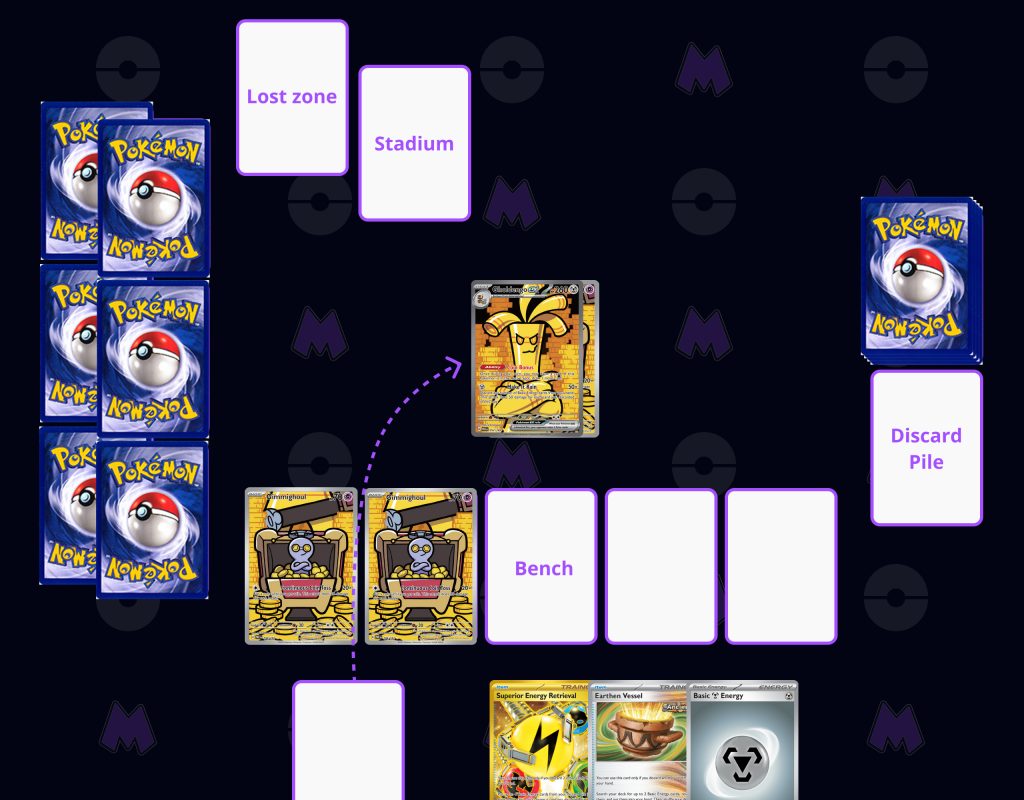
If you have a Stage 1 Pokémon to evolve from a Basic or a Stage 2 Pokémon to evolve from a Stage 1 Pokémon, and you placed the Basic or Stage 1 last turn, you can evolve. Alternatively, you can use a Rare Candy to evolve a Basic Pokémon directly into a Stage 2 Pokémon, provided the Basic was placed last turn. When evolving a Pokémon, you retain any attached cards, energy, and damage counters from the Basic or Stage 1 Pokémon it evolves from. However, it removes any status conditions such as poison, burn, paralysis, confusion, and sleep, as well as attack effects applied by your opponent in their last turn. Once evolved, your Pokémon can’t use the previous Pokémon’s abilities or attacks, unless specified by certain Pokémon abilities that allow you to use pre-evolution attacks.
Attach energy
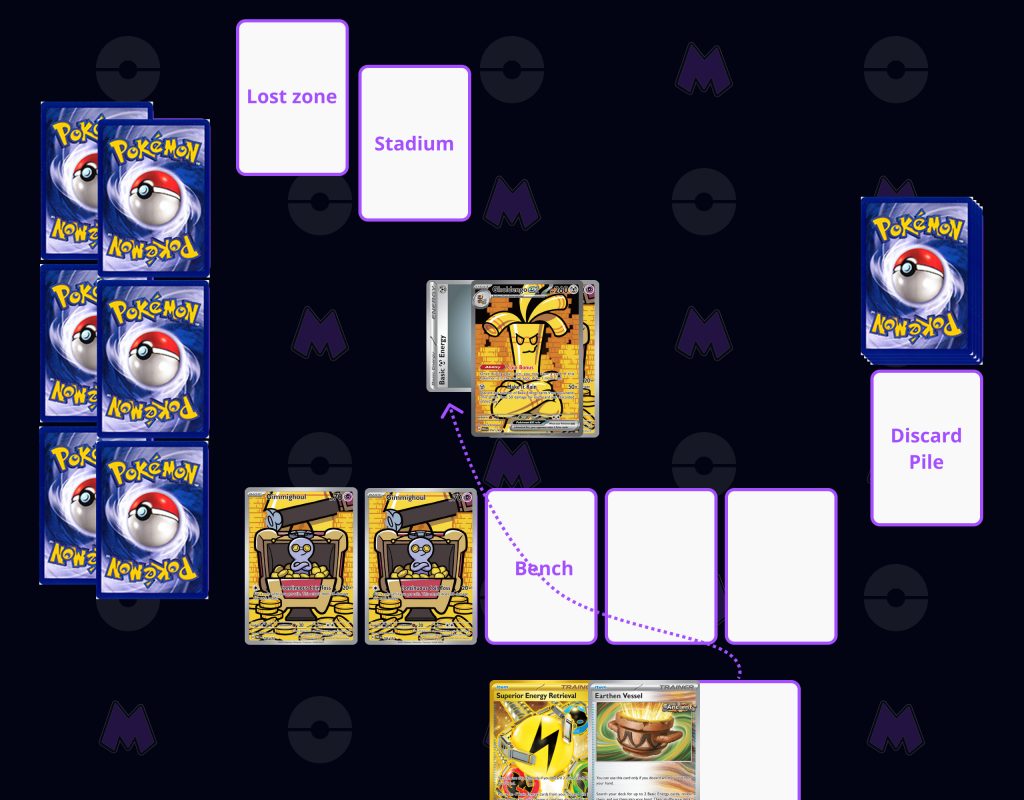
You can attach one energy card per turn to either an active or benched Pokémon. Additionally, trainer cards, Pokémon abilities, and attacks can aid in accelerating energy onto your Pokémon. While you can place energy onto your Pokémon in various ways, our preferred method is to position the energy sideways underneath your Pokémon. This setup allows for clear visibility of the number of energy attached and simplifies their removal when attacks necessitate discarding energy.
Play trainer cards
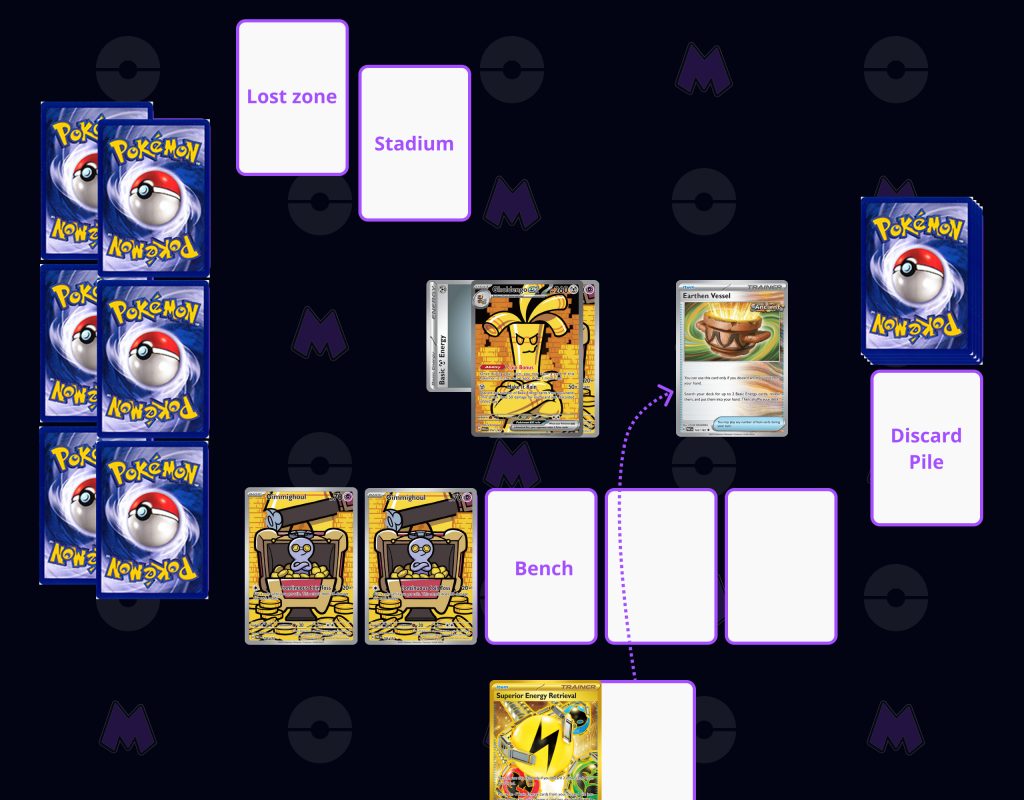
During each turn, you can play one Supporter and one Stadium Trainer card, but make sure to review the rule box on each card. Stadium cards will persist in play unless they are replaced by another stadium, affected by a Pokémon attack, or influenced by other Trainer cards. Remember, you cannot swap a stadium with the same one; only different stadium cards are allowed. When a stadium is removed, it goes into the discard pile. Additionally, during the very first turn of the game, you cannot use any Supporter cards (a type of Trainer).
Retreat active Pokémon
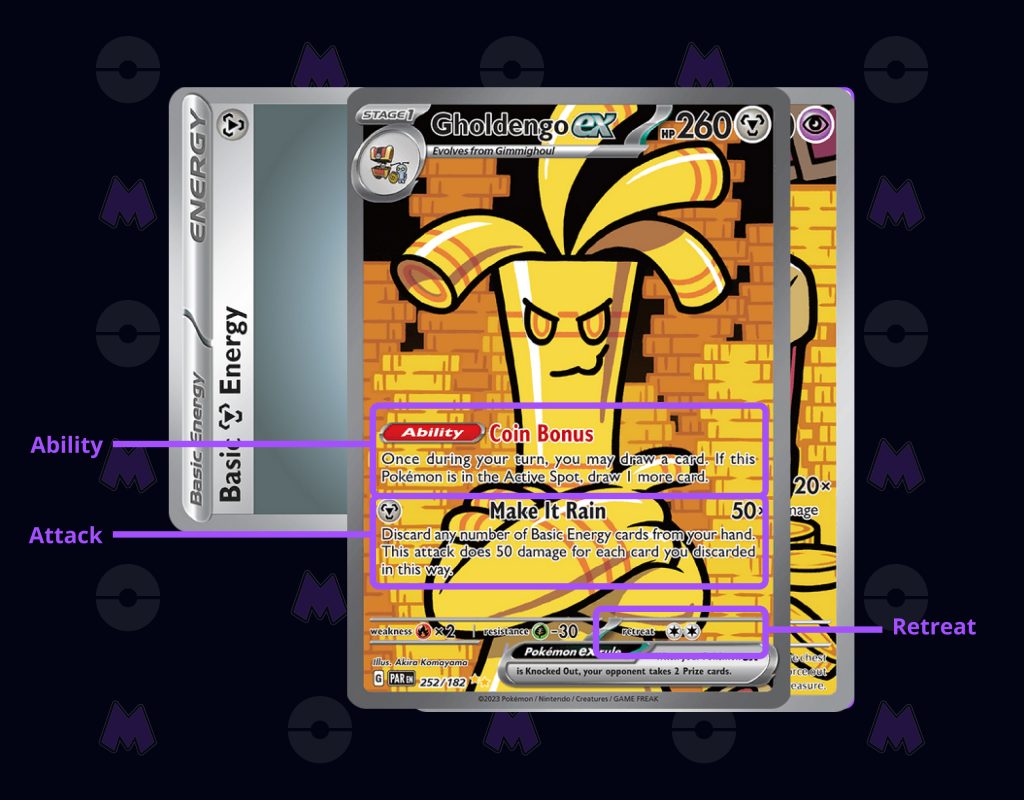
Once per turn, the active Pokémon can be retreated, usually requiring energy displayed on the card. This energy must be attached to the active Pokémon and discarded upon retreat. Some Pokémon have free retreat, meaning they require no energy. However, if the active Pokémon is paralyzed or asleep, it can’t retreat. Special conditions like poison, burn, and confusion are removed upon retreat, along with any attack effects from the opponent’s last turn. The Pokémon retains all attached cards and damage counters. The Pokémon replacing it from the bench can still choose to attack but cannot retreat. Trainer cards, Pokémon abilities, and attacks can also aid in changing the active Pokémon, allowing for multiple switches in one turn.
Use Pokémon abilities
Certain Pokémon possess abilities that can be utilized before, during, or after attacking, depending on their specific rules. It’s crucial to carefully read each ability to apply it correctly, as some may necessitate certain conditions. Most abilities are activated before attacking, such as those that help draw more cards from your deck. Using a Pokémon’s ability typically doesn’t count as an attack, allowing it to be utilized alongside attacking. While some abilities function continuously while the Pokémon is on the bench or in the active spot, others require the Pokémon to be in the active spot for activation. When using an ability, be sure to inform your opponent. To keep track, we like to turn the card 45 degrees to remind ourselves which Pokémon abilities have been utilized, remembering to straighten your cards at the end of the turn.
End your turn
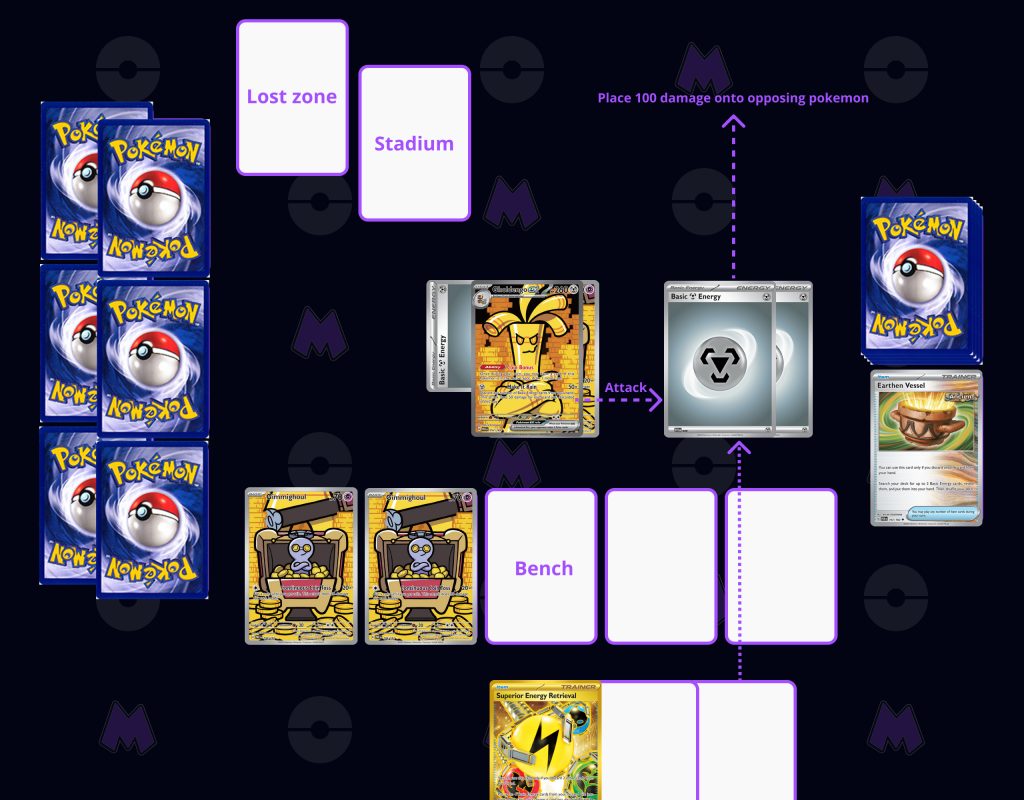
Before concluding your turn, ensure you’ve accomplished all your objectives with confidence. To end your turn, declare an attack from the active Pokémon if the energy requirements are fulfilled. However, if the Pokémon is unable to attack or if it strategically makes sense to keep the opposing Pokémon in play, communicate to your opponent that your turn ends without attacking. Remember, during the very first turn of the game, attacking is not permitted.
Some attacks require colorless energy, indicating that any basic or colorless energy can be attached and used to power the attack. Attacks with an empty circle symbol require no energy and can be used without any energy attachment.
Not all attacks deal damage; some only apply effects, such as searching for other Pokémon to add to your bench or disrupting your opponent’s next turn. Some attacks deal damage while also applying effects.
When calculating damage, consider the opposing Pokémon’s resistance and weakness, then adjust the damage total accordingly. Your opponent must place damage counters on their active or benched Pokémon, as some attacks can target the bench. Additionally, you may need to apply damage counters to your own bench if certain attacks damage all Pokémon on the board or specifically target your bench.
If any Pokémon are knocked out during the attacking phase, move them and all attached cards to the discard pile. However, some Trainer cards, like Lost City, may alter this effect, so always check for active effects. Take one prize card per Pokémon knocked out, ensuring to read any rule box on the knocked-out Pokémon as it may permit you to take more than one prize card. Similarly, certain Pokémon attack effects may also allow you to take more prize cards. If you pick up the last prize card, you win!
If an active Pokémon is knocked out, a Pokémon from the bench must be promoted to the active spot. If there are no benched Pokémon available, the player with no Pokémon left loses. If there are still prizes and active Pokémon on both sides, the turn ends.
Between turns
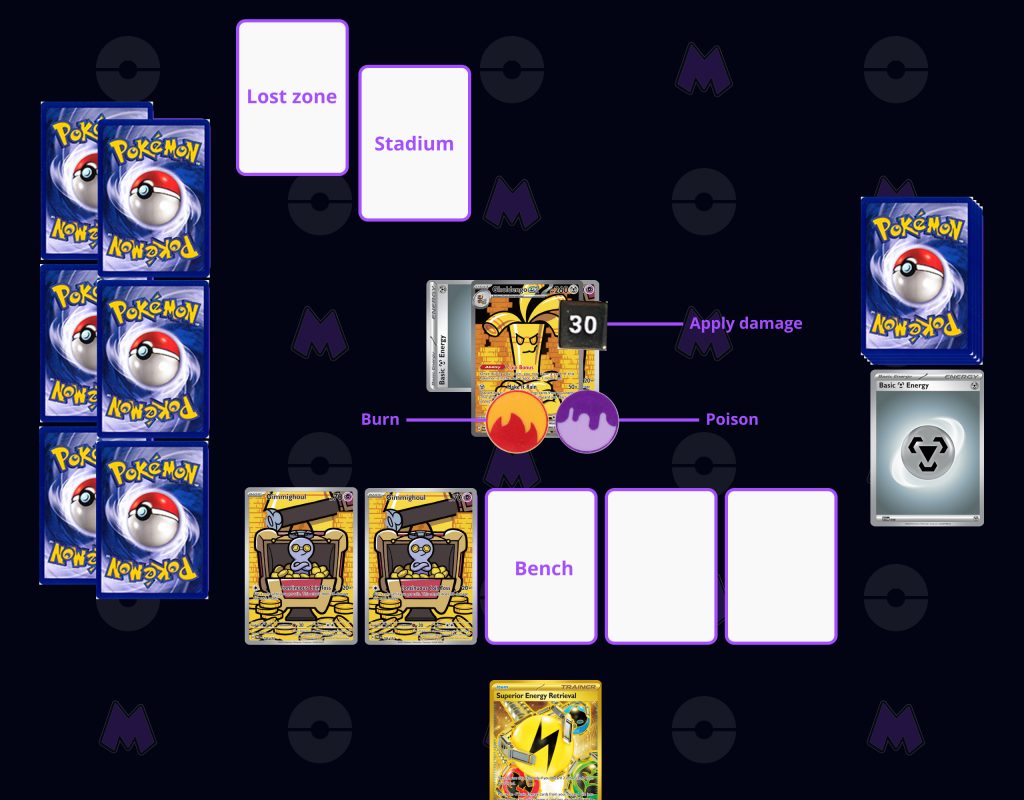
Following the end of your turn and before your opponent’s begins, there’s a crucial step known as Pokémon Checkup. During this phase, special conditions are evaluated:
- Poison: If either active Pokémon is poisoned, add a damage counter.
- Burn: If either active Pokémon is burned, add 2 damage counters. Then, flip a coin; if heads, remove the burn marker.
- Sleep: If either active Pokémon is asleep, flip a coin; if heads, it wakes up; if tails, it remains asleep.
- Paralysis: If either active Pokémon is paralyzed, remove the effect at the end of the owner’s next turn.
Additionally, Pokémon abilities and Trainer cards may be applied during checkup. These abilities or rules will specify “during Pokémon Checkup” or “between turns.”
It’s important to apply special conditions separately from other effects, without mixing them up. For instance, you can’t apply poison, then a Pokémon ability, and then burn; it must be all special conditions and then abilities, or abilities and then special conditions.
If any Pokémon is knocked out during checkup, the opposing player may take another prize card.
Team Maniax, shuffling out – see you next time!

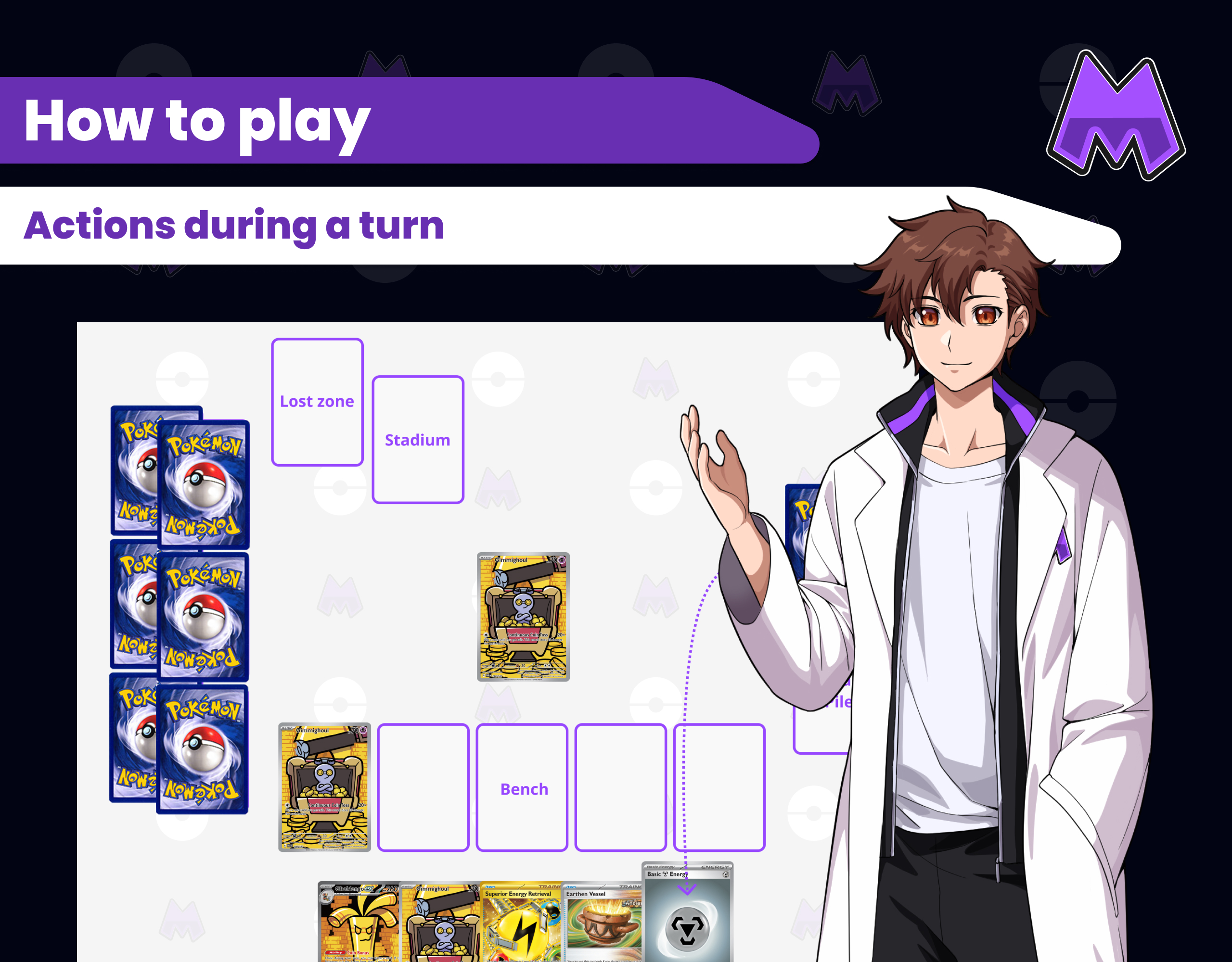
Leave a Reply